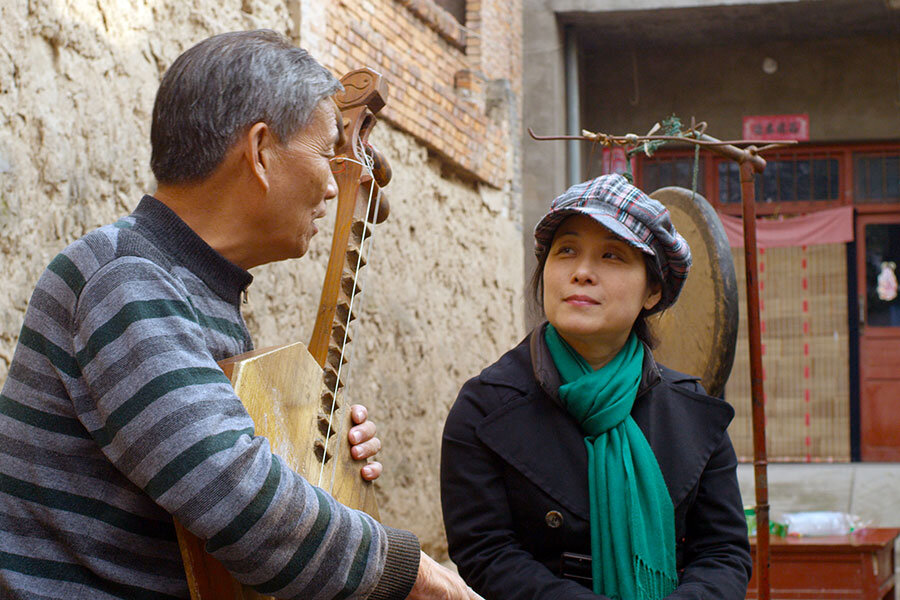'The Music of Strangers' shows how musicmaking can be salvation
Morgan Neville’s documentary “The Music of Strangers” is about the multicultural Silk Road Ensemble assembled in 2000 by the celebrated cellist Yo-Yo Ma. But this is no mere concert film. As is usually the case with Neville’s work, most notably in his Oscar-winning “20 Feet From Stardom,” the music is in many ways the pretext for an examination of the musicians’ lives. We wouldn’t care so much about those lives if we didn’t also care about the music. In “The Music of Strangers,” the sounds these gifted artists make are the truest expressions of themselves.
Ma is the film’s centerpiece, but he shares the spotlight with a dazzling array of musicians, many with politically fraught histories. The virtuosos from the 20-member ensemble that Neville focuses on come from all over the globe, including Spain, Iran, China, and Syria. Ma’s goal was to divine a kind of universal musical language after a career that began as a child prodigy. (We see an amazing clip of him at age 7, with a cello almost as big as he is, standing resolutely on stage with Leonard Bernstein.)
After spending, by his count, 22 years of his life touring on the road, Ma was also seeking more control over his time. (His son, Nicholas, recounts how, as a boy, he used to think his father worked at the airport because he was always going there.) As gifted as he is, it’s startling to hear Ma describe how he never committed to being a cellist. “I just fell into it,” he says, which is really another way of saying that music chose him. But in creating the Silk Road Ensemble, which has been described as a “Manhattan Project of music,” he was also making a conscious decision to choose, in a sense, his ongoing musical mission.
It’s regrettable that more of the ensemble’s music is not featured in the documentary, but we hear enough to counteract, for the most part, the charge often leveled at Ma – that his amalgamation of world artists is a stunt, an acoustical impurity. Even if this were altogether true, one would have to be an insufferable purist to decry what Ma has wrought, if for no other reason than the joyous look of spiritual liberation on the faces of so many of these musicians, especially given their often horrific back stories.
Iranian Kayhan Kalhor, for example, who plays the kamancheh, or Persian spiked fiddle, is shown in Iran in 2009 saying that he “can’t imagine moving abroad again,” only to go into political exile a month later. Syrian clarinetist Kinan Azmeh bemoans the world’s indifference to the suffering in his country. He says he stopped composing for a while because it created “emotions that are far more complex than I can express in my music.”
And yet, it is musicmaking that is the salvation of many of these performers, and likely this would be so even if their lives were as relatively free of suffering as, say, Ma’s appears to be. That same expression of spiritual liberation can be seen on the faces of just about all musical artists, of whatever discipline, in their moments of highest transport. You can see that look on the women featured in “20 Feet From Stardom.” Neville’s music documentaries, in a way, can all be viewed as a search for how that look came to be.
Not all the Silk Road musicians have stories as anguished as Azmeh’s or Kalhor’s. The film’s most joyous performer is the bagpiper Cristina Pato, known as “the Jimi Hendrix of Galicia,” who is such a powerhouse that she could probably upstage the Rolling Stones (in their prime). Who knew that bagpipes could serve as such rousing vehicles for rapture? The sprightly Wu Man, who plays the Chinese stringed instrument called the pipa, was, like Ma, a child prodigy, and, like him, she has retained an ineffable love for music. She has the definitive last word in this film: “There is no East or West. It’s just a globe.” Grade: A- (Rated PG-13 for brief strong language.)





